
Only Regulatory Products (API/FDF), Drugs in Developments and News are Updated on this Virtual Booth
Update your Virtual Booth on PharmaCompass, ask us ![]()
About
CPhI North America CPhI North America
Not Confirmed
Not Confirmed
20-22 May, 2025
German Wound CongressGerman Wound Congress
Not Confirmed
Not Confirmed
07 April-09 May, 2025
Not Confirmed
Not Confirmed
08 April-11 May, 2025
List your booth number for exhibitions, ask us
CONTACT DETAILS
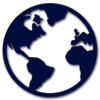
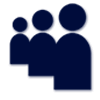

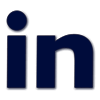

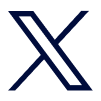
Upload your Marketing & Sales content on your company Virtual Booth, click HERE.
Events
Webinars & Exhibitions
CPhI North America CPhI North America
Industry Trade Show
Not Confirmed
20-22 May, 2025
German Wound CongressGerman Wound Congress
Industry Trade Show
Not Confirmed
07 April-09 May, 2025
Industry Trade Show
Not Confirmed
08 April-11 May, 2025
Digital content

INTERVIEW #SpeakPharma
[Sponsored by another company]https://www.pharmacompass.com/speak-pharma/our-unmatched-efficiency-and-track-record-of-faster-dmf-filings-give-our-customers-a-critical-competitive-advantage
VLOG #PharmaReel
[Sponsored by another company]DATA COMPILATION #PharmaFlow
[Sponsored by another company]https://www.pharmacompass.com/radio-compass-blog/cdmo-activity-tracker-axplora-enhances-adc-capacities-quotient-beefs-up-hpapi-capabilities-evonik-euroapi-forge-deals
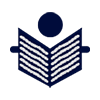
14 Apr 2025
// GLOBENEWSWIRE
https://www.globenewswire.com/news-release/2025/04/14/3060619/0/en/Sandoz-files-antitrust-litigation-against-Amgen-regarding-patient-access-to-etanercept-biosimilar-in-the-US.html

11 Apr 2025
// PR NEWSWIRE
https://www.prnewswire.com/news-releases/imdelltra-demonstrated-superior-overall-survival-in-small-cell-lung-cancer-302426291.html

04 Apr 2025
// ENDPOINTS

26 Mar 2025
// FDA
https://www.pharmacompass.com/pdf/news/enforcement-report-week-of-march-26-2025-60230.pdf

08 Mar 2025
// FIERCE BIOTECH
https://www.fiercebiotech.com/biotech/amgen-enters-maritime-launching-2-late-stage-obesity-trials-maritide

08 Mar 2025
// PR NEWSWIRE
https://www.prnewswire.com/news-releases/amgen-and-kyowa-kirin-provide-top-line-results-from-rocatinlimab-phase-3-ignite-study-in-adults-with-moderate-to-severe-atopic-dermatitis-302396165.html
Inspections and registrations

ABOUT THIS PAGE
Amgen Inc is a supplier offers 11 products (APIs, Excipients or Intermediates).
Find a price of INTRAVENOUS SOLUTION STABILIZER (IVSS) bulk with DMF offered by Amgen Inc
Find a price of AMG 191 CELL LINE DEVELOPMENT bulk with DMF offered by Amgen Inc
Find a price of AMG 282 DRUG SUBSTANCE bulk with DMF offered by Amgen Inc
Find a price of AMG 191 DRUG SUBSTANCE bulk with DMF offered by Amgen Inc
Find a price of AMG 157 (TEZEPELUMAB) PHASE 3 CMC AMENDMENT (DRUG SUBSTANCE AND DRUG PRODUCT) bulk with DMF offered by Amgen Inc
Find a price of AMG 191 DRUG PRODUCT bulk with DMF offered by Amgen Inc
Find a price of BULK PURIFIED MURINE MONOCLONAL ANTIBODY (ABX-CBL) TO BLAST CELLS bulk offered by Amgen Inc
Find a price of HUMAN MONOCLONAL ANTIBODY (ABX-EGF) TO EPIDERMAL GROWTH FACTOR RECEPTOR bulk offered by Amgen Inc
Find a price of HUMAN MONOCLONAL ANTIBODY (MDX-015)(SP2/0,- AG14 CELLS, MEDAREX) TO IL15 bulk offered by Amgen Inc
Find a price of Carfilzomib bulk offered by Amgen Inc
Find a price of Recombinant Human Growth Hormone bulk offered by Amgen Inc
